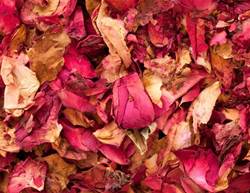You can get dehydrated skin through the weather or environment, skin conditions, skincare habits and even certain products. The result is dullness, irritation and even more pronounced wrinkles.
Parched skin is more likely to occur in winter. But whether you just experience it then, or all year round, we’ve got dermatologist-approved solutions to nix it for good.
1. Moisturise right, and often
Obviously hydrating skin is crucial to combating dryness, but not all moisturising skincare products are created equal.
“Face lotions and creams are generally more hydrating than oils, serums and other formulas — and they can increase skin’s moisture for hours,” says skin researcher Birnur Aral.
For maximum efficacy, “look for moisturisers that contain humectants such as glycerin and hyaluronic acid, which can bind or hold on to water effectively,” plus “ingredients that help repair the skin barrier, such as ceramides and niacinamide," says Aral.
Don’t wait until your face is noticeably dry to moisturise; consistency is key for keeping skin hydrated and healthy in the long term and preventing dehydration from occurring in the first place.
“The best treatment to replenish skin hydration is applying a topical face moisturiser twice daily in the morning and evening,” says dermatologist Dr Jeanine Downie.
2. Increase your application
Smooth a layer of face moisturiser on clean skin after other treatment products like serums but before sunscreen in the morning (try a hydrating serum for even more moisture). To help heal dehydrated skin quickly, massage moisturiser into skin using a circular motion.
“The technique helps push hydrating ingredients deeper into rough patches and dry lines for an immediate plumping effect,” says dermatologist Dr Ava Shamban.
See below for the best moisturisers for dry skin.
3. Don’t forget your lips
Lips can be the most parched area on your face since they have fewer protective layers of skin. Apply a rich lip balm or treatment every time you moisturise your face — in the morning and evening and throughout the day as needed.
The most effective formulas contain a combination of moisturising ingredients (eg plant oils and emollients like squalane and triglycerides) and occlusive ingredients (such as petrolatum, beeswax or plant waxes and butters like shea butter) that form a protective barrier to lock in nourishment and hydrate too, Aral explains.
4. Cleanse with care
For dry skin, just any old soap won’t do: some face washes can over-cleanse skin, exacerbating dryness.
“A gentle soap- and fragrance-free cleanser that doesn’t contain harsh sulfates and is pH balanced will maintain the skin’s barrier without stripping or hurting the skin microbiome,” says dermatologist Whitney Bowe.
Choose a formula that’s labelled “moisturising” or “hydrating” for best results. To further prevent skin dehydration, try washing your face with a cleanser only in the evening, rinsing with just water in the morning.
5. Be smart about exfoliating
While you may think of exfoliation as a way to slough off dry, flaky patches, a harsh face peel or scrub is the enemy of parched skin, as it can disrupt skin’s moisture barrier and remove its naturally occurring hydrating oils.
Avoid stronger acids like glycolic acid and rougher exfoliants like sugar and salt. Instead, try a gentler face peel formula that contains lactic acid or fruit acids or a face scrub with round jojoba beads, which are less likely to be abrasive on skin. Apply your exfoliator once per week to avoid dehydrating skin.
6. Invest in a humidifier
Lack of humidity in the air in winter or an arid climate can contribute to dry skin. To counteract it, “I always recommend that my patients use a humidifier while they sleep to boost skin’s moisture levels,” Dr Downie advises.
7. Hydrate from the inside out
Skin moisturisation happens from within, too. “Drinking enough water definitely improves skin hydration,” Dr Downie says. Aim for at least eight glasses, or about two litres of water per day.
8. Turn down the heat when you wash
Hot and steamy showers might feel amazing, but they can be harmful to skin by disrupting its barrier, leading to sensitivity.
“For the most skin-friendly cleanse, make sure the water temperature is lukewarm, and test it on your wrist first,” suggests chemist Sabina Wizemann.
9. Wear a skincare coat
Need a dose of intensive hydration? At night, seal your moisturiser in with a thick coat of a rich oil, balm or ointment that can be applied to facial skin.
Like a winter coat for your face, it functions as an occlusive, locking hydrating skincare ingredients and moisture into your skin as you sleep so you wake up softer, smoother and less parched.
Also apply it when you’re heading outdoors for an extended period in cold or dry weather to protect exposed skin from the elements and prevent it from becoming chapped or irritated.

Prevention Australia product picks
What are the best moisturisers for dry skin? Here's our round up of the best hydrating beauty products.
THE MOISTURISER
Laneige Water Bank Blue Hyaluronic Cream Moisturiser
A featherlight cream that provides hours of hydration, from this cult Korean skincare brand that specialises in skin moisturising.
THE FACE BALM
Ego QV Dermcare Sting Free Ointment with Ceramides
This all-purpose balm is ideal for locking in moisture. Use on face, lips, elbows, knees; it’s a dry-skin superhero.
THE SERUM
NO 7 Hydraluminous Water Concentrate
Give your face a dose of hydration with this light concentrate powered with pure hyaluronic acid.
THE CLEANSER
Aspect Platinum Hydrating Cream Cleanser
This nourishing cleanser with hydrating ploy hydroxy acids, omega-rich oils and glycerine leaves skin feeling clean and soft.
THE EXFOLIANT
The Ordinary Lactic Acid 10% +HA 2%
This gentle peel provides mild exfoliation with inflammation-reducing Tasmanian Pepperberry extract.
THE LIP BALM
Dermal Therapy Lip Balm, Chemist Warehouse
This intensely moisturising balm with camphor, clove oil and menthol leaves lips feeling instantly softer.










